|
|
Comments: This is the only use of Obverse 1 at Carson City in 1870, and the first of two uses of Reverse A in 1870. Obverse 1 was later sent to San Francisco and used to strike all known 1870-S dollars. Reverse A was subsequently used to strike all 1872-CC examples. |
Obverse 1 The following photo shows the attribution grid for Obverse 1. The Obverse 1 date position is virtually identical to Obverse 3, with only a slight difference in the date grid. The right base of the 1 is RE on Obverse 1, JL of RE on Obverse 3. 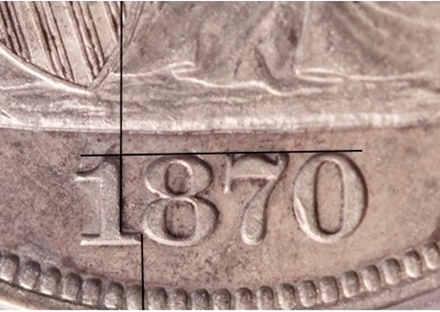 1870-CC Obverse 1 attribution grid Beyond the small date grid difference the best identifiers are several die lines and other markers unique to this obverse. The next photo shows the location of these markers. 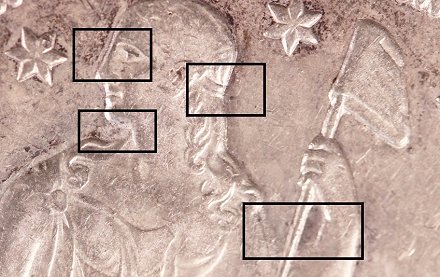 1870-CC Obverse 1 die markers The following photos expand each area to show the details of the markers. We call this obverse the “eyelash” obverse. The first expanded photo shows the source of the name, a tiny die line extending from Miss Liberty’s face just left of her eye, similar to an eye lash. 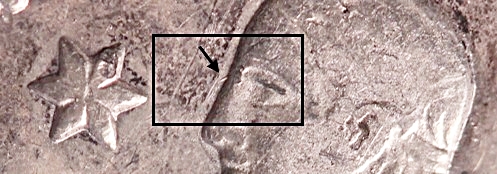 1870-CC Obverse 1 eye lash The other notable markers are die lines around the pole where it intersects the arm, tiny die lines extending right into the field from Miss Liberty’s hair ribbon, and a die line slanting down to the right in the unfinished area under the chin. 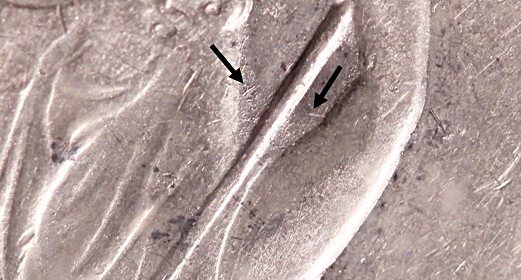 1870-CC Obverse 1 die lines around pole 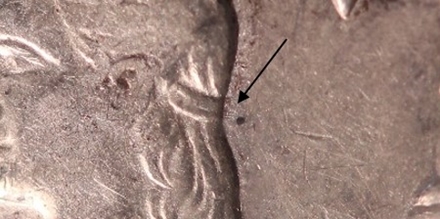 1870-CC Obverse 1 die lines from hair ribbon 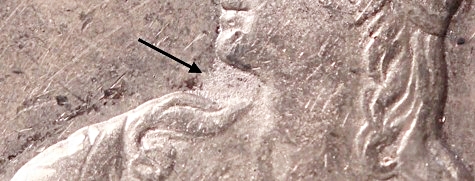 1870-CC Obverse 1 die lines under chin
|
The following photo shows the attribution lines for 1870-CC Reverse A. 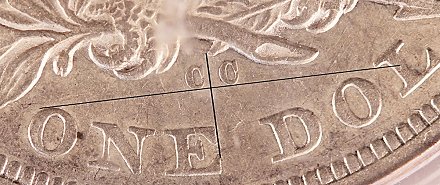 1870-CC Reverse A attribution lines This reverse is classified as one of two wide CC reverses. The other is Reverse C. The wide CC’s can be identified by noting that a line from the tip of the arrow feather to the upper right edge of the E in ONE passes completely right of the first C. The two wide CC reverses are very similar. They can be distinguished by noting the line drawn under the mintmark. On Reverse A this line grazes the top of the O in ONE and barely touches the lower tip of the upper left serif of the L in DOL. On Reverse C it passes through the right side of the curve of the O and the upper right serif of the L. Reverse C is rare and seldom seen. Reverse A was used to strike OC-1 and OC-2.
|
| Photo credits:
Obverse 1 and Reverse A: 1870-CC PCGS AU53, from the Osburn-Cushing reference collection. |
